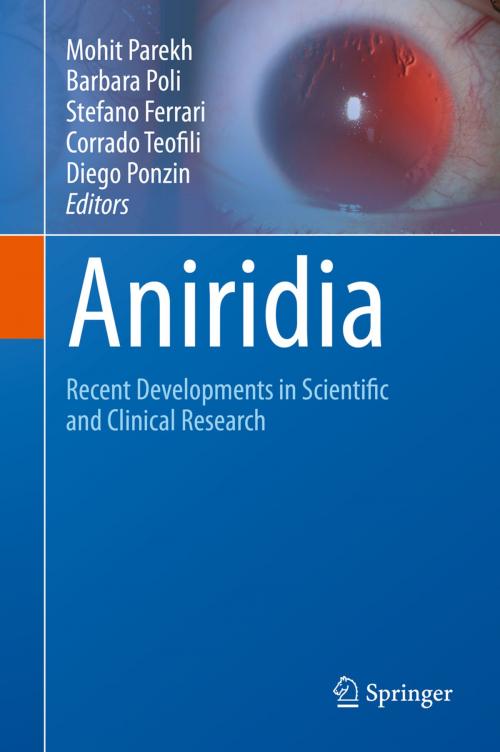Aniridia
Recent Developments in Scientific and Clinical Research
Nonfiction, Health & Well Being, Medical, Specialties, Ophthalmology, Science & Nature, Science, Other Sciences, Molecular Biology| Author: | ISBN: | 9783319197791 | |
| Publisher: | Springer International Publishing | Publication: | August 25, 2015 |
| Imprint: | Springer | Language: | English |
| Author: | |
| ISBN: | 9783319197791 |
| Publisher: | Springer International Publishing |
| Publication: | August 25, 2015 |
| Imprint: | Springer |
| Language: | English |
The aim of this book is to highlight the latest findings in Aniridia research. Aniridia, meaning “without iris”, is a rare genetic disorder affecting vision, characterized by the incomplete formation of the iris (the coloured part of the eye that surrounds the black pupil). It may also cause other segments of the eye to be under-developed such as the optic nerve and the macula (the central part of the retina). Aniridia and associated conditions affect individuals differently. So while some affected people are partially sighted or blind, others may have near normal sight. Aniridia is congenital (present at birth) and is caused by a dysfunction of the PAX6 gene, situated on the 11th chromosome that causes the premature cessation of eye development. Aniridia affects between 1:40,000 to 1:100,000 people, and affects males and females equally. People with Aniridia may also experience secondary conditions such as Photophobia, Nystagmus, Glaucoma, Cataracts and Keratopathy.
The aim of this book is to highlight the latest findings in Aniridia research. Aniridia, meaning “without iris”, is a rare genetic disorder affecting vision, characterized by the incomplete formation of the iris (the coloured part of the eye that surrounds the black pupil). It may also cause other segments of the eye to be under-developed such as the optic nerve and the macula (the central part of the retina). Aniridia and associated conditions affect individuals differently. So while some affected people are partially sighted or blind, others may have near normal sight. Aniridia is congenital (present at birth) and is caused by a dysfunction of the PAX6 gene, situated on the 11th chromosome that causes the premature cessation of eye development. Aniridia affects between 1:40,000 to 1:100,000 people, and affects males and females equally. People with Aniridia may also experience secondary conditions such as Photophobia, Nystagmus, Glaucoma, Cataracts and Keratopathy.















